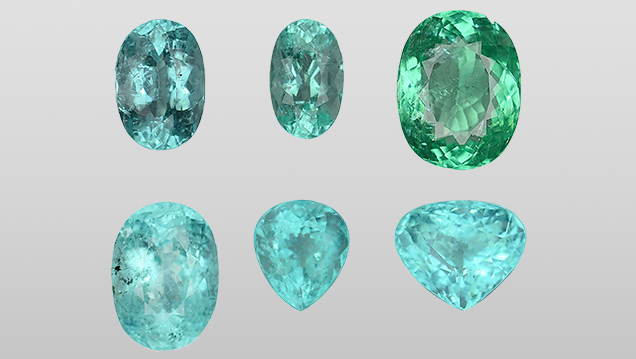Cuprian Liddicoatite Tourmaline
January 30, 2017

This peer-reviewed article by two GIA research scientists, Yusuke Katsurada and Ziyin Sun, reports on copper-bearing tourmaline that belongs to the liddicoatite species. It is provided here as a PDF download and will be part of Gems & Gemology’s print and online Spring 2017 issue.
Cuprian tourmaline with vivid blue, green, and violet colors, known as “Paraíba” or “Paraíba-type” tourmaline in the trade, was first discovered in 1989. Until now, nearly all of this material has been classified as the elbaite species of tourmaline. In this article, Katsurada and Sun report on 13 samples that were submitted to GIA’s Tokyo lab by several different clients in 2016. The stones’ geographic origin is unknown.
The samples’ gemological properties and copper and manganese concentrations were consistent with copper-bearing elbaite. Liddicoatite is separated from elbaite only by quantitative chemical analysis—in this case, laser ablation–inductively coupled plasma–mass spectrometry (LA-ICP-MS). When compared against 26 other cuprian tourmalines, the new material showed stronger fluorescence under long-wave UV light; this may be caused by a high concentration of rare earth elements. The 13 samples were further classified as calcic-group tourmaline, as opposed to the alkali-group classification of the 26 stones used for comparison.
This material may have already entered the gem market as “Paraíba” or “Paraíba-type” tourmaline. Further analysis is required to identify geologic origin and growth conditions.
Dr. Katsurada is a scientist and staff gemologist at GIA in Tokyo. Mr. Sun is a staff gemologist at GIA in Carlsbad, California.
.jpg)


